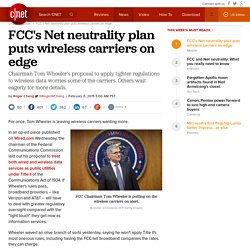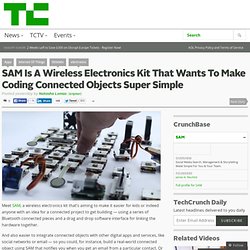

Google Confirms Plans for Wireless Service. This will be a "small scale" concept, Google's Sundar Pichai said; expect more details in the next few months.

Google today confirmed that it is exploring the option of offering a wireless service. During a keynote at Mobile World Congress in Barcelona, Sundar Pichai, Google's SVP of Android, Chrome, and Google Apps, said that in order to push Android forward, you always need to be looking ahead. That's why Google got into the hardware business with the Nexus lineup, and why it's looking into offering wireless service.
"I think we're at the stage where we need to think of hardware, software, and connectivity together," Pichai said, according to a live blog from The Verge. That's especially important as more and more device - like smartwatches - get connectivity. Don't expect Google to go head to head with the likes of Verizon and AT&T; this will be a "small scale" concept, and the company will be working with current partners, Pichai said. Stephanie Mlot contributed to this story. FCC's Net neutrality plan puts wireless carriers on edge - CNET. Chairman Tom Wheeler's proposal to apply tighter regulations to wireless data worries some of the carriers.

Others wait eagerly for more details. For once, Tom Wheeler is leaving wireless carriers wanting more. In an op-ed piece published on Wired.com Wednesday, the chairman of the Federal Communications Commission laid out his proposal to treat both wired and wireless data services as public utilities under Title II of the Communications Act of 1934. If Wheeler's rules pass, broadband providers -- like Verizon and AT&T -- will have to deal with greater regulatory oversight compared with the "light touch" they get now as information services. Wheeler waved an olive branch of sorts yesterday, saying he won't apply Title II's most onerous rules, including having the FCC tell broadband companies the rates they can charge. Wheeler's unexpected proposal has put wireless carriers on edge -- and eager for more details. What does this mean for you? Reactions from A to Z Test case: T-Mobile. FCC will propose strong net neutrality rules; ISPs reclassified under Title II.
The FCC is looking to propose strong net neutrality rules for both broadband and wireless communications in the United States. ISPs will be classed as Title II carriers and all will be right with the world. At least that’s the gist of the commission’s proposal which was leaked by the Wall Street Journal. FCC head, Tom Wheeler, is expected to circulate the proposed rules ahead of a February 26th vote on the issue.
If passed, the new rules represent a stunning reversal of the FCC’s position and, many would argue, the right thing to do. Not long ago, Wheeler, alongside the whole FCC seemed to be in favor of paid prioritization or so-called “fast lanes” which would destroy net neutrality and allow rich companies to control traffic online. What’s striking is that the FCC is also looking into enshrining net neutrality in the mobile internet market, an aspect that was deliberately left out of previous versions of the rules. Source: Wall Street Journal | Image via NYDailyNews.
SAM Is A Wireless Electronics Kit That Wants To Make Coding Connected Objects Super Simple. Meet SAM, a wireless electronics kit that’s aiming to make it easier for kids or indeed anyone with an idea for a connected project to get building — using a series of Bluetooth connected pieces and a drag and drop software interface for linking the hardware together.

And also easier to integrate connected objects with other digital apps and services, like social networks or email — so you could, for instance, build a real-world connected object using SAM that notifies you when you get an email from a particular contact. Or link your small business’ Facebook like button to an LED interface that flashes every time you get a new like. Kids today are getting pretty spoiled for choice when it comes to cutting their teeth learning to code and/or hacking around with bits of hardware designed for the purpose of play. “What we think is hardware is an amazing gateway to software,” co-founder Joachim Horn tells TechCrunch.